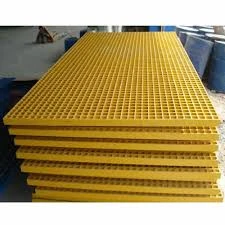loading...
- No. 9, Xingyuan South Street, Dongwaihuan Road, Zaoqiang County, Hengshui, Hebei, China
- admin@zjcomposites.com
- +86 15097380338
- Welcome to visit our website!
reinforced concrete with frp bars mechanics and design
Mechanics and Design of Reinforced Concrete with FRP Bars
Reinforced concrete has long been the material of choice for the construction industry due to its exceptional strength and durability. However, traditional steel reinforcement has its limitations, prompting engineers and researchers to explore alternative materials. One such innovation is the use of Fiber Reinforced Polymer (FRP) bars in reinforced concrete, which has gained considerable attention for its mechanical properties and potential advantages over conventional steel.
FRP bars are composite materials made from a polymer matrix reinforced with fibers, such as glass, carbon, or aramid. This combination results in a product that is lightweight, corrosion-resistant, and has a high tensile strength. The non-corrosive nature of FRP bars makes them particularly appealing for structures exposed to harsh environmental conditions. Unlike steel, which can suffer from rust and degradation over time, FRP bars maintain their integrity, leading to reduced maintenance costs and extended service life of structures.
From a mechanical perspective, FRP bars exhibit a linear elastic behavior up to failure, which contrasts with the more ductile nature of steel. This means that while FRP can provide high tensile strength, it does not provide the same warning before failure, which is crucial in structural applications. Engineers must therefore take into consideration the brittleness of FRP when designing structures, ensuring that adequate safety factors and load considerations are implemented.
The design of reinforced concrete structures incorporating FRP bars also differs from that using traditional reinforcement. The design approach must address various factors such as bond behavior between the concrete and the FRP, as well as the differences in thermal expansion between the two materials. Because FRP bars have a lower modulus of elasticity than steel, they can undergo greater deformations under load, necessitating adjustments in the design to prevent excessive cracking and ensure structural stability.
reinforced concrete with frp bars mechanics and design

Furthermore, understanding the behavior of concrete in tension and compression is critical. While concrete is strong in compression, it is inherently weak in tension. The use of FRP bars significantly enhances the tensile capacity of concrete structures, allowing for more efficient designs with potentially slimmer profiles. However, calculations must carefully account for the reduced shear capacity, as FRP lacks the same shear strength as steel.
One of the primary challenges in utilizing FRP bars is the lack of comprehensive design codes and standards. While some guidelines are emerging, the standardization of design practices is crucial for widespread adoption. Engineers must be well-versed in the unique characteristics of FRP materials, including their response to various loading conditions, temperature effects, and long-term performance under cyclic loads.
Despite these challenges, the integration of FRP bars in reinforced concrete is a promising development that holds the potential to revolutionize construction practices. As research continues to evolve, it is anticipated that design methodologies will become more refined, leading to a broader acceptance and application of FRP-reinforced concrete in various structural applications, from bridges to high-rise buildings.
In conclusion, the mechanics and design of reinforced concrete with FRP bars present unique opportunities and challenges. By leveraging the strengths of FRP—such as corrosion resistance and high tensile strength—engineers can design more durable and efficient structures. With ongoing advancements in materials technology and design standards, the future of FRP-reinforced concrete appears promising, paving the way for innovative and resilient infrastructure solutions.
-
Transform Your Spaces with FRP Grating SolutionsNewsNov.04,2024
-
The Versatility and Strength of FRP RodsNewsNov.04,2024
-
The Excellence of Fiberglass Water TanksNewsNov.04,2024
-
The Benefits of FRP Grating for Your ProjectsNewsNov.04,2024
-
Elevate Your Efficiency with FRP Pressure VesselsNewsNov.04,2024
-
Welcome to the World of FRP Pressure VesselsNewsOct.12,2024
-
Unveiling the Future of Filtration: Why FRP Filter Vessels are a Game ChangerNewsOct.12,2024
